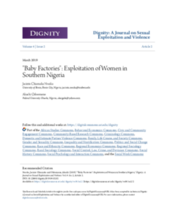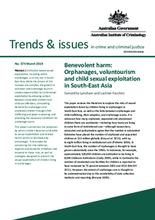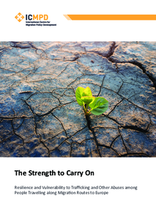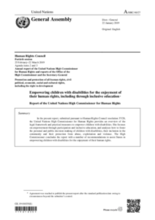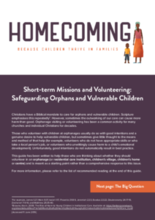Displaying 141 - 150 of 463
This paper examines the development and proliferation of baby-selling centers in southern Nigeria and its impacts on and implication for women in Nigeria. It demonstrates how an attempt to give protection to unwed pregnant girls has metamorphosed into “baby harvesting” and selling through the notorious “baby factories,” where young women are held captive and used like industrial machines for baby production.
This paper summarises the processes by which children become vulnerable to sexual exploitation and related harms within or facilitated by orphanages.
This book explores how humanitarian interventions for children in difficult circumstances engage in affective commodification of disadvantaged childhoods.
This chapter identifies the structural components of the transnational illegal adoption market by applying the basic logic of the routine activity theory that has been developed by Cohen and Felson.
This chapter explicates the concept of the orphan industrial complex to argue that persistent narratives of “orphan rescue” not only commodify orphans and orphanhood itself but—counter to their stated goal—can actually spur the “production” of “orphans,” resulting in child exploitation and trafficking.
This study analyses the incidence of human trafficking among people travelling along the ‘Eastern Mediterranean route,’ the ‘Balkan route’ and the ‘Central Mediterranean route’; factors of resilience to human trafficking and other abuses; and factors of vulnerability to human trafficking and other abuses. The study reveals the particular vulnerability of unaccompanied minors to child exploitation and abduction and highlights key recommendations for addressing human trafficking along these routes.
In this webinar presented by RISE Learning Network, Omattie Madray and Zenainda Rosales presented an extensive study recently carried out which analyzed over 100 documents and conducted over 20 interviews to gain insights on practices of organizations supporting and caring for boys affected by sexual violence in their recovery process.
In the present report, submitted pursuant to Human Rights Council resolution 37/20, the United Nations High Commissioner for Human Rights provides an overview of the legal framework and practical measures to empower children with disabilities.
This guide was developed by Homecoming and has been written to help those in the Christian community who are thinking about whether they should volunteer in an orphanage (or residential care institution, children’s village, children’s home or centre).
Out of the shadows: Shining light on the response to child sexual abuse and exploitation - a 40-country benchmarking index - examines how countries are responding to the threat of sexual violence against children.

